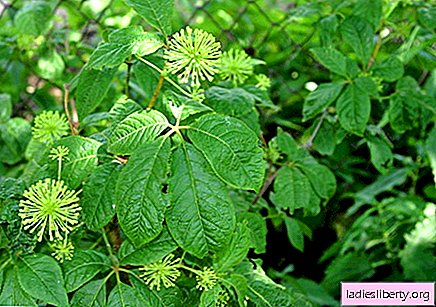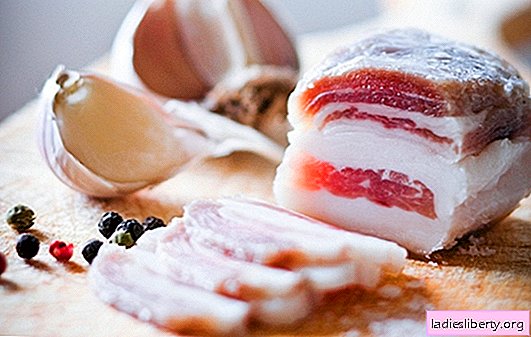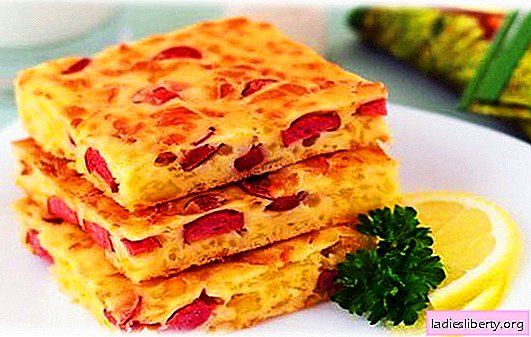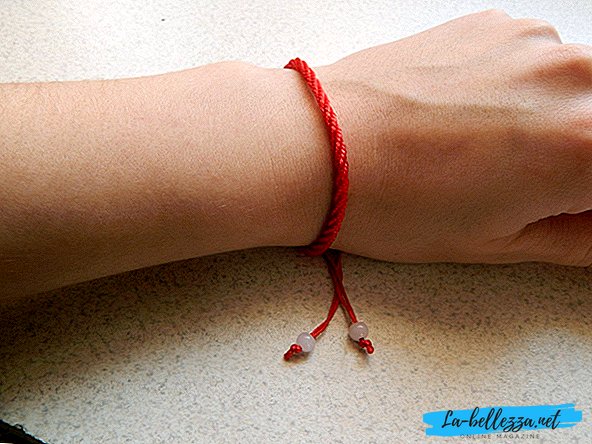
Eleutherococcus - a general description
Eleutherococcus - a genus of perennial spiny shrub plants of the Aralian family. In various literature, eleutherococcus appears under several names: prickly pepper, free-berries, princeberry, bloody bush, Siberian ginseng.
Under favorable conditions, an adult plant can reach a height of four or more meters. Its stems are straight, vertical; the root system is powerful, the main root is a modified underground shoot, from which many subordinate roots forming the rhizome depart.
Young branches of Eleutherococcus are covered with thin spikes, similar to needles, they fall off as the plants age. Leaves planted on long cuttings have a five-fingered shape (very similar to an open palm). The base of the leaf blade is wedge-shaped, the edge is double-toothed.
Small flowers of lilac, lilac or golden color are crowded into an umbrella inflorescence. Bloom, as a rule, from mid-July to August. Fruits - black berries - are formed on the topmost ray of inflorescence. Eleutherococcus propagates by root clones, offspring, and in culture - by seeds.
Eleutherococcus - types and places of growth
The genus in nature is represented by 15 species distributed in the temperate zones, in areas near the ocean, where the humidity is high. Dryness and heat are detrimental to eleutherococcus. In vivo, it is most common in Japan, Siberia, East Asia, and the Philippines. Single plants can be found in the mountains.
Of the 15 species, only one has cultural and medical significance - prickly Eleutherococcus, which can be found on the territory of our country in the Far Eastern regions, Amur Region, Khabarovsk Territory, Primorye, and Southern Sakhalin. However, due to its undemanding nature, the plant gets along well with cold snowy winters, so it can be planted without problems in your garden.
Eleutherococcus - healing properties
Prickly Eleutherococcus is close in its properties to ginseng, because it was not without reason that they were endowed with family ties. In the course of laboratory studies, it has long been established that the roots of the plant are rich in glycosides, resins, essential oils, valuable fats, vitamins and other biologically active substances.
Eleutherococcus increases working capacity, endurance, providing adaptogenic and tonic effects, stimulates the central nervous system, accelerates thought processes, eliminates fatigue, and raises blood pressure (slightly).
In addition, it has been experimentally proved that Eleutherococcus preparations exhibit anti-tumor activity, prevent the growth of malignant neoplasms and the spread of metastases, dilate blood vessels, including brain and coronary vessels, reduce blood sugar, and increase visual acuity due to the nutrition of eyeball tissues.
Eleutherococcus - dosage forms
In folk and traditional medicine, eleutherococcus roots are mainly used, which are harvested in the fall during leaf fall. It is proved that in this period the roots are literally filled with useful and active substances.
Raw materials should be dug carefully, leaving at least 20% of the root system in the soil so that the plant can recover and give good offspring. Do not forget about the pricklyness of the bush and act carefully.
The dug out roots must be cleaned of soil residues, nodules and shoots using a hard brush and cold water, cut into small layers and dried in a vegetable dryer at 70 degrees Celsius, if not, use an attic or any other room. Ready extract should be immediately packaged in bales, stored in a dry and ventilated place for 2 years. Dried roots are used to make tinctures.
Eleutherococcus - recipes of traditional medicine
- Ready-made prickly Eleutherococcus extract can be bought at any pharmacy. It is taken 25-50 drops half an hour before a meal with neurosis, diabetes, as a stimulant and tonic.
- Tincture at home: 50 gr. prepared roots (rhizomes) are laid out in a glass container, poured with a bottle (0.5 l) of vodka, closed and kept for 14-15 days in an isolated dark place. Then they squeeze everything and take 25-40 drops of two r. per day (preferably in the morning) before meals. The course is three to five weeks.
Eleutherococcus - contraindications
- childhood;
- feverish conditions;
- An acute period of infectious diseases;
- severe hypertension.
With an overdose of drugs based on Eleutherococcus, insomnia, anxiety, irritability, excessive activity and other manifestations of central nervous system excitement can occur.











